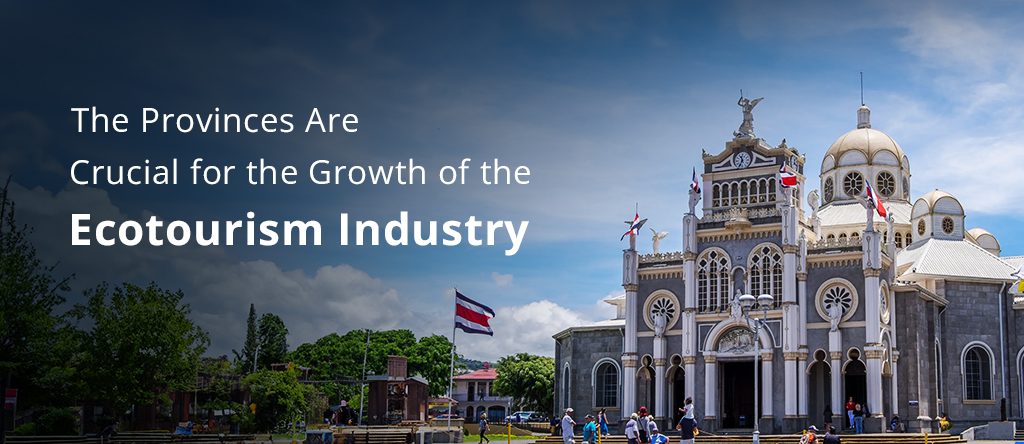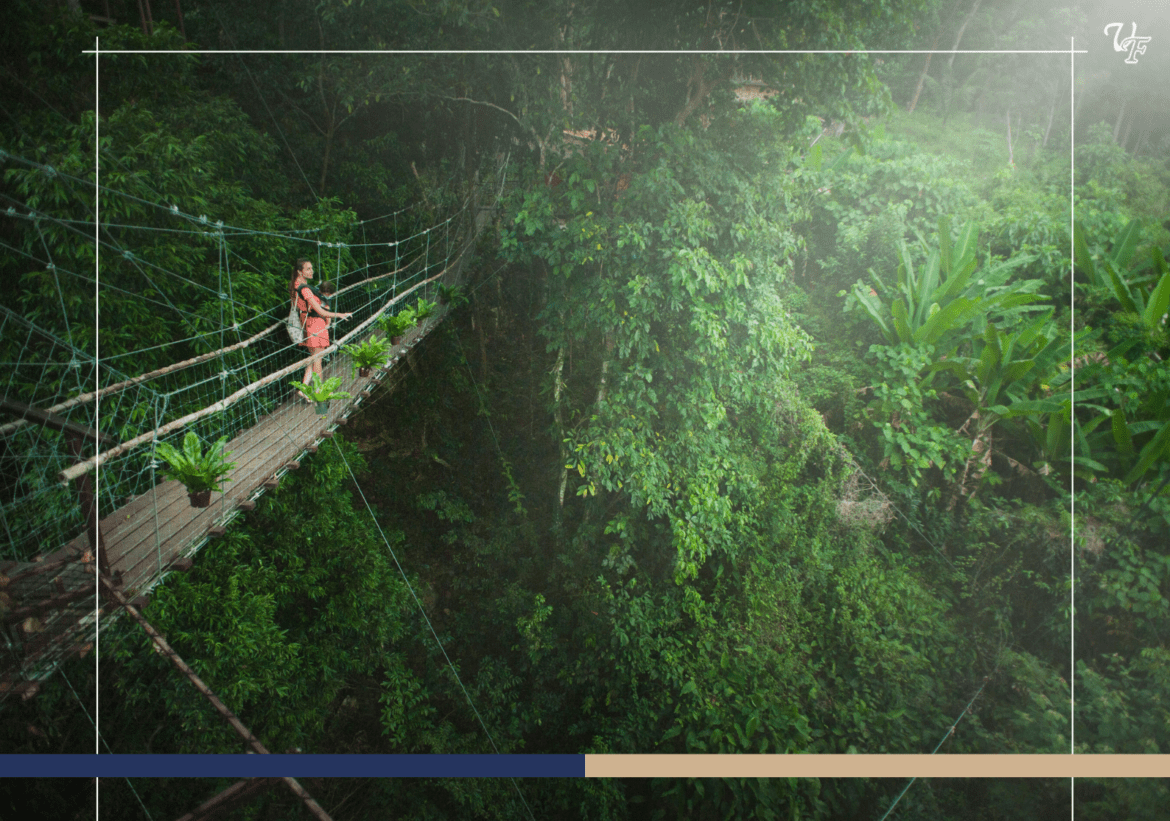Costa Rica is best known for its stunning biodiversity, ecological practices, and rich ancestral heritage in Central America. It is located between Nicaragua to the north and Panama to the south and thus possesses different types of landscapes, such as dense forests and untouched coastlines.
Such an active yet tiny country is subdivided into seven provinces, each boasting unique appeals and traits.
It is necessary to go deeper into the provinces of Costa Rica
that distinguish each region from others.
Overview of Costa Rica
Given its location, Costa Rica is strategically placed to act as a biological corridor for diverse fauna and flora species. This fact has made it a global champion in environmental management and sustainable ecotourism activities.
For those who seek things to do in Costa Rica, there are countless possibilities within this nation’s varying ecosystems, including cloud forests, biological reserves, mountains, volcanoes, waterfalls, and much more.

Administrative Division
Costa Rica is divided into seven provinces, each with its unique charm and attractions:
- San José
- Alajuela
- Cartago
- Heredia
- Guanacaste
- Puntarenas
- Limón
Province 1: San José
Capital City: San José
San José is the capital city of Costa Rica. It is the political, cultural, and economic heart of the country. This tropical capital is politically, culturally, and economically viable. It has a mix of modern and colonial buildings, lively arts and crafts atmospheres, and bustling markets.
A visit to San José is an excellent option for truly understanding why Costa Rica is the happiest country.
Key Attractions
- National Theatre: An architectural gem showcasing performances and cultural events.
- Gold Museum: It houses a splendid array of pre-Columbian gold artifacts.
- Central Market: A vibrant trade centre that provides local produce and organic meals.
Highlights
Due to its central position, San José is a good place from which one can begin to explore the entire country. Historical landmarks are intermingled with modern attractions in San José, making it a lively city full of life. All museums, theaters, and galleries within this area offer a deeper understanding of what Costa Rica is known for.
Province 2: Alajuela
Capital City: Alajuela
Some of Costa Rica’s most renowned natural attractions are easily accessible through the province of Alajuela, which is close to San José and famous for its rich agricultural resources.
Key Attractions
- Poás Volcano National Park: Located in close proximity to some of the largest active craters on the globe.
- La Paz Waterfall Gardens: One of the most popular volcano in Costa Rica, Arenal Volcano, attracts many tourists because it has a number of attractions like hiking paths, hot pools and other adventurous stuff.
Highlights
Alajuela is filled with many coffee and sugarcane plantations, which help support Costa Rica’s farming industry greatly. For that reason, it is one of the most loved tourist locations due to its appealing natural traits and exciting prospects.
Province 3: Cartago
Capital City: Cartago
Cartago, once the chief capital of Costa Rica, brims with colonial charm and history. Its reputation comes from its religious importance and rich environment, representing the Pura Vida meaning.
Key Attractions
- Basilica of Our Lady of the Angels: A significant pilgrimage center containing a statue of the Virgin Mary that is respected Basilica of Our Lady of the Angels.
- Irazu Volcano: The highest volcano in Costa Rica with spectacular views.
- Lankester Botanical Gardens: A center for botanical research as well as home to various types of plants.
Highlights
Its colonial architecture and cultural landmarks reflect Cartago’s progressive history. The province’s different terrains, including volcanoes and botanical gardens, offer this combination of natural and historical beauty.

Province 4: Heredia
Capital City: Heredia
Heredia is sometimes referred to as the “City of Flowers.” This beautiful area of Costa Rica excels in education and agricultural activities. It boasts several universities and stunning coffee plantations.
Key Attractions
- Braulio Carrillo National Park: A vast park with diverse wildlife and lush rainforests.
- INBioparque: An educational park showcasing Costa Rica’s biodiversity.
- Barva Volcano: A dormant volcano offering hiking trails and scenic views.
Highlights
Heredia is unique because of its learning institutions and beautiful panoramas, making it a romantic getaway for couples. Visitors can learn more about how coffee is produced in Costa Rica by tasting and touring its plantations.
Province 5: Guanacaste
Capital City: Liberia
Guanacaste has stunning Pacific beaches, dry tropical forests, and a vibrant tourism industry. It is a province largely visited by wanderlusts who love beaches and those looking for thrilling adventures.
Key Attractions
- Rincón de la Vieja National Park: It is a thermal paradise with hot springs, mud pots, and diverse wildlife.
- Papagayo Peninsula: An elegant tourist spot with beautiful and untouched beaches and hotels.
- Santa Rosa National Park: A historic park that safeguards Costa Rica’s natural and cultural patrimony.
Highlights
Guanacaste’s extended coastline and hot weather have made it a destination for many tourists. They can enjoy the tropics while participating in various activities, ranging from trekking to viewing wild animals at its parks. Its national parks provide many recreational and educational activities like hiking, bird watching, or observing wildlife.
Province 6: Puntarenas
Capital City: Puntarenas
Puntarenas is an important coastal city famous for its long stretch of coast and a large number of fish species. It’s a center for ecotourism and exciting, adventurous, and cultural activities.
Key Attractions
- Manuel Antonio National Park: A park famous for beautiful sandy beach and high biodiversity.
- Monteverde Cloud Forest: A unique cloud forest that provides particular wild animals and plant species.
- Nicoya Peninsula: An attractive area which includes beaches and vibrant communities with people who know how to surf.
Highlights
The province’s coastal areas and national parks provide opportunities for snorkeling, diving, and visiting unique ecosystems. It is highly popular for its marine biodiversity and commitment to ecotourism.
Province 7: Limón
Capital City: Limón
Limón is known for its vibrant festivals and unique wildlife. Thanks to its heavy Caribbean influence, it differs culturally from other parts of Costa Rica.
Key Attractions:
- Tortuguero National Park: It is an essential hatching ground for marine turtles that hosts a network of waterways as well as various animal species.
- Cahuita National Park: It is famous for its coral gardens and picturesque shorelines.
- Puerto Viejo de Talamanca: It boasts vibrant culture fully rooted in African Caribbean traditions with magnificent coastline.
Highlights
The music, cuisine, and festivals of the region of Limón reflect its Afro-Caribbean culture. In Costa Rica, it is unique due to the province’s intrinsic beauty and cultural density.

Conclusion
The seven regions of Costa Rica offer an impressive range of attractions and activities. Each province has a unique appeal, from the busy urban scape of San José to peaceful coastlines in Guanacaste or lively cultures in Limón.
Costa Rica’s dedication to ecological preservation and sustainable travel promise guarantees that its natural exquisiteness and cultural legacy are safeguarded for future generations. Whether you seek thrills, peace, or learning about other cultures, these Costa Rica provinces provide everything you need. For those planning their next trip, consider creating a Costa Rica travel itinerary for 10 days to experience these Costa Rica states completely.
Delve into the amazing country, which, for all reasons, remains a top choice for Costa Rica tours.











